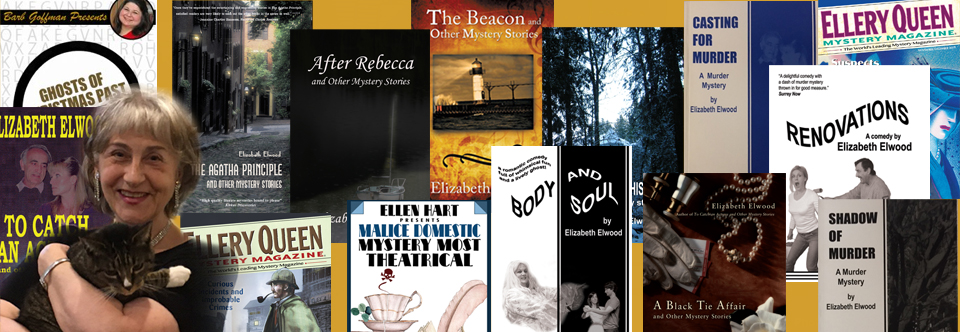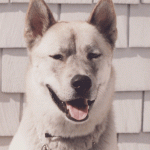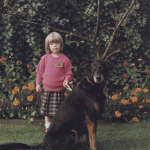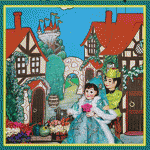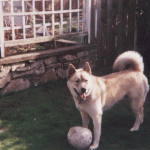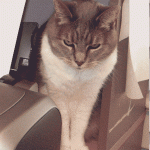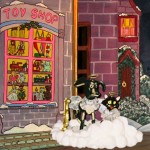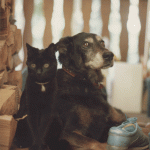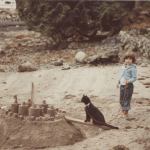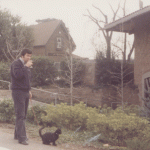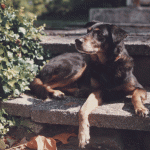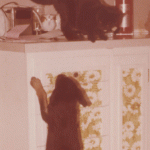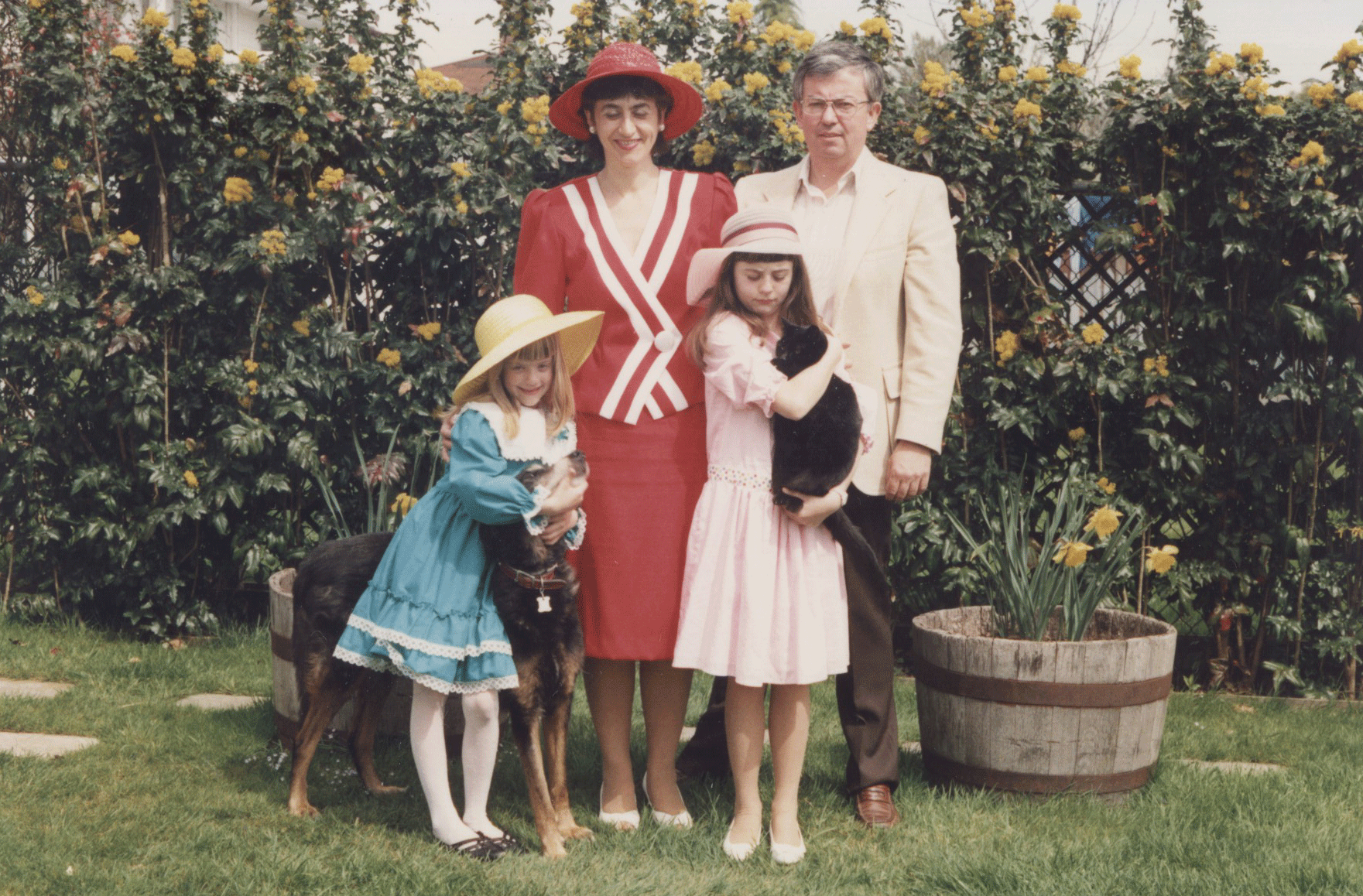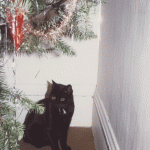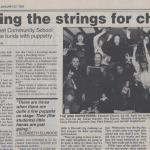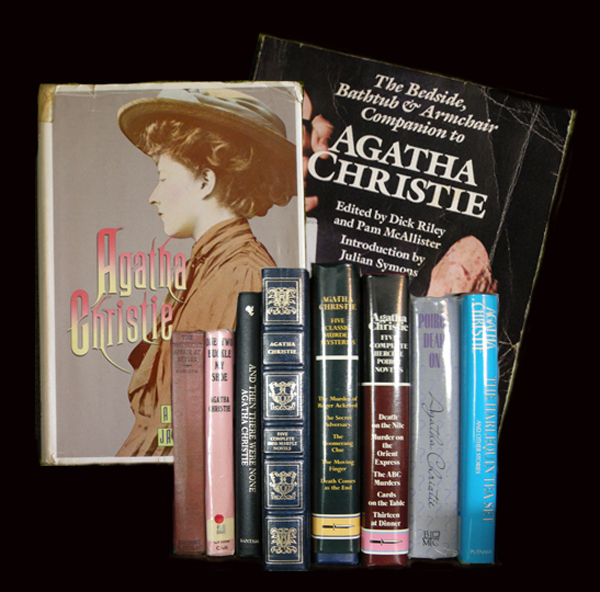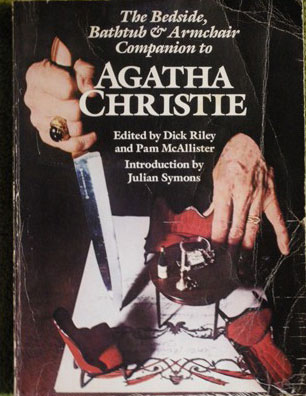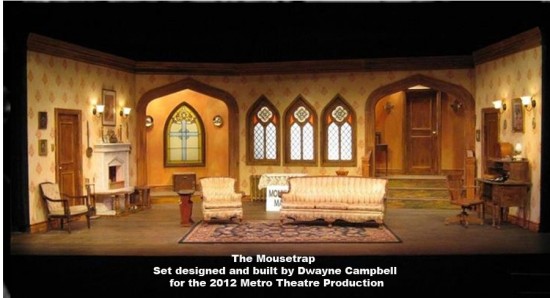Elizabeth Elwood's story "Number 10 Marlborough Place" won Best Short Story in the Crime Writers of Canada 2022 Awards of Excellence.
Doing Research the Fun Way – Watching the VPD Dog Squad in Action
Reading the recent news about VPD Service Dog, Teak, who miraculously survived after being slashed by a criminal, reminded me of the wonderful service dogs we had the privilege to watch when I was researching a story for The Agatha Principle. Mystery writers always look for ways to garner information about police procedure, and my visit to the VPD Dog Squad and a subsequent opportunity to watch the team on a training exercise provided me with a wealth of fascinating information.
The service dogs, as we all know, are used for tracking, apprehension and identification of substances such as drugs or explosives. At one time, Labs were used as sniffer dogs, but they were phased out a couple of years ago; now sable, or black and tan German shepherds are cross-trained to handle all jobs. However, the Labs are still used for customs and excise as part of Canada Border Security Agency. Not every police force has its own dog unit. VPD has a large contingent of service dogs, and Port Moody has a small K9 team. However, Delta and New Westminster share a unit, and the RCMP has a mobile unit that is shared between Burnaby, North Vancouver, Coquitlam and Surrey.
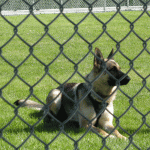 It is well worth a visit to VPD’s lovely new facility off Terminal Avenue. The tour that is offered is interesting and informative, and it is great fun seeing the demonstration of how the dogs work. The VPD dogs are a European strain, but bred locally, and German commands are used in training them. Most are males, but occasionally a female is used, and the dogs stay with their handlers from puppyhood throughout their entire lives. Specialized trainers train the dogs, but the handlers are taught to work with them, and when the dogs are retired around 8 or 9 years of age, their handlers can buy them for one dollar. Once that dog is retired, the handler is also out of the dog squad.
It is well worth a visit to VPD’s lovely new facility off Terminal Avenue. The tour that is offered is interesting and informative, and it is great fun seeing the demonstration of how the dogs work. The VPD dogs are a European strain, but bred locally, and German commands are used in training them. Most are males, but occasionally a female is used, and the dogs stay with their handlers from puppyhood throughout their entire lives. Specialized trainers train the dogs, but the handlers are taught to work with them, and when the dogs are retired around 8 or 9 years of age, their handlers can buy them for one dollar. Once that dog is retired, the handler is also out of the dog squad.
Training for dog handlers is critical. Dog handlers are extremely vulnerable as their eyes have to be on their dogs much of the time and their hands are on a leash. Therefore, they may not be as quick to spot trouble, and in a sudden emergency, they cannot get to their sidearm quickly. Dog handlers are also often first on the scene so part of their training involves taking special race-car driving courses. The dogs ride in expensive Chevrolet Tahoes with climate control and refrigerated floors. The handlers are allowed to leave the engines running all the time when the dog is left in the car.
 Like the cars, the VPD Dog Squad building is very impressive. There is a report room, a workout room, a food-storage room and a laundry/dog-wash/checkup room, the latter with a bath that every dog would envy, not to mention every human if you substituted moisturizers for flea soap. A flip of the dial produces soap, conditioner, flea soap, flea powder or anti-bacterial soap. There is also a flip-up counter for checkups and a scale to check the dog’s weight. In the hall, there is a notice board where handlers can leave instructions for their colleagues if they are going to be away and their dog needs care. Each dog has a large kennel with access to the outdoors. The K-9s are very well looked after, but so they should be. A row of photographs in the report room and a list of names at the base of the statue outside the building remind visitors of the wonderful dogs who have been killed in the line of duty.
Like the cars, the VPD Dog Squad building is very impressive. There is a report room, a workout room, a food-storage room and a laundry/dog-wash/checkup room, the latter with a bath that every dog would envy, not to mention every human if you substituted moisturizers for flea soap. A flip of the dial produces soap, conditioner, flea soap, flea powder or anti-bacterial soap. There is also a flip-up counter for checkups and a scale to check the dog’s weight. In the hall, there is a notice board where handlers can leave instructions for their colleagues if they are going to be away and their dog needs care. Each dog has a large kennel with access to the outdoors. The K-9s are very well looked after, but so they should be. A row of photographs in the report room and a list of names at the base of the statue outside the building remind visitors of the wonderful dogs who have been killed in the line of duty.
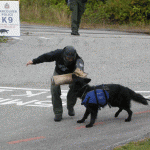 The dog squad is a popular unit, so there are lots of applicants, and anyone who wants in has to spend some months as a ‘quarry’ before getting taken on. Being a quarry isn’t for the faint-hearted. When watching the demo on the training ground, we learned that the dog’s reward is the sleeve. Since the dogs are trained to go for the arm, the quarries wear a heavily padded detachable sleeve. We watched a handsome shepherd named Kane go through his paces, racing round the obstacle course, tail wagging and eagerly responding to his handler. When it came time for the quarry to appear, complete with padded arm, Kane was barking in joyful anticipation. In spite of his obvious enthusiasm, he waited patiently for the appropriate commands. The dogs are trained to sit and stay while the handler searches the quarry, and have to wait until they receive a command to apprehend. However, if the quarry moves during the search and there is danger to the handler, the dog makes its own judgment call to attack again. The dogs are also trained to listen to one person only, and are given exercises where they learn to ignore a command given by the quarry. Kane performed in exemplary fashion, and once he had successfully ‘apprehended’ and the demo was over, he got to play with the sleeve.
The dog squad is a popular unit, so there are lots of applicants, and anyone who wants in has to spend some months as a ‘quarry’ before getting taken on. Being a quarry isn’t for the faint-hearted. When watching the demo on the training ground, we learned that the dog’s reward is the sleeve. Since the dogs are trained to go for the arm, the quarries wear a heavily padded detachable sleeve. We watched a handsome shepherd named Kane go through his paces, racing round the obstacle course, tail wagging and eagerly responding to his handler. When it came time for the quarry to appear, complete with padded arm, Kane was barking in joyful anticipation. In spite of his obvious enthusiasm, he waited patiently for the appropriate commands. The dogs are trained to sit and stay while the handler searches the quarry, and have to wait until they receive a command to apprehend. However, if the quarry moves during the search and there is danger to the handler, the dog makes its own judgment call to attack again. The dogs are also trained to listen to one person only, and are given exercises where they learn to ignore a command given by the quarry. Kane performed in exemplary fashion, and once he had successfully ‘apprehended’ and the demo was over, he got to play with the sleeve.
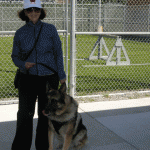
After the demo, when we mingled and talked, we were introduced to two of the dogs, one a puppy, still untrained, and one a lovely fellow named Gus who was close to retirement. The puppy had obviously been watching the big guys go through their paces, because he lapped up the pats and attention, but he wanted to chew non-stop on my arm.
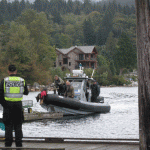 My second opportunity to see these great dogs in action occurred a few months later when my husband arranged for VPD to use the IOCO Boat Club for a training exercise. This exercise involved the Dog Squad with the Emergency Response Team, and each group was brought in on a rigid-hull inflatable, after which they had to act out scenarios which none of them knew in advance. Different formations were used for different terrains and scenarios, although the dog handler, being the most vulnerable, was always last off the boat and at the rear when coming up the dock. Caution seemed to be the foremost concern, and having seen the groups in action, I could understand why. However entertaining it was to watch the training exercise, the reality hit home. The police and service dogs have very dangerous jobs, and they can’t always anticipate when that danger will strike. I have a lot of admiration for those willing to take on the challenge.
My second opportunity to see these great dogs in action occurred a few months later when my husband arranged for VPD to use the IOCO Boat Club for a training exercise. This exercise involved the Dog Squad with the Emergency Response Team, and each group was brought in on a rigid-hull inflatable, after which they had to act out scenarios which none of them knew in advance. Different formations were used for different terrains and scenarios, although the dog handler, being the most vulnerable, was always last off the boat and at the rear when coming up the dock. Caution seemed to be the foremost concern, and having seen the groups in action, I could understand why. However entertaining it was to watch the training exercise, the reality hit home. The police and service dogs have very dangerous jobs, and they can’t always anticipate when that danger will strike. I have a lot of admiration for those willing to take on the challenge.
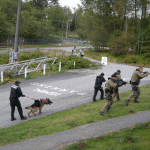 The IOCO event enabled me to talk with trainers as well as handlers, and that was really useful, since the story I was researching involved sniffer dogs. Whereas other training doesn’t start until 15 months as it’s gruelling and hard on the dogs, sniffer dogs can start training as early as six months because they are doing fun stuff that pups enjoy. To train a sniffer dog, one sets out tubs containing different items. When the dog sniffs the item you want it to recognize, it gets taken outside for a game with a ball. Evidently one can train dogs to find anything. One female handler had a dog that got bored easily, so she hid items all over her lot while the dog was in its crate; then she turned it loose to track them. I was told that misbehaved dogs make good sniffer dogs because they love climbing all over things and ripping them up. So not only did I get the information I needed to finish my story, I learned all kinds of useful tips on dog-training. Of course, we’re a dogless household these days, given that Minx the Manx is elderly and deserves to enjoy her old age in peace, but the next time I acquire a dog of my own, I’ll be able to teach it how to fetch our slippers. Thank you Vancouver Police Department!
The IOCO event enabled me to talk with trainers as well as handlers, and that was really useful, since the story I was researching involved sniffer dogs. Whereas other training doesn’t start until 15 months as it’s gruelling and hard on the dogs, sniffer dogs can start training as early as six months because they are doing fun stuff that pups enjoy. To train a sniffer dog, one sets out tubs containing different items. When the dog sniffs the item you want it to recognize, it gets taken outside for a game with a ball. Evidently one can train dogs to find anything. One female handler had a dog that got bored easily, so she hid items all over her lot while the dog was in its crate; then she turned it loose to track them. I was told that misbehaved dogs make good sniffer dogs because they love climbing all over things and ripping them up. So not only did I get the information I needed to finish my story, I learned all kinds of useful tips on dog-training. Of course, we’re a dogless household these days, given that Minx the Manx is elderly and deserves to enjoy her old age in peace, but the next time I acquire a dog of my own, I’ll be able to teach it how to fetch our slippers. Thank you Vancouver Police Department!

